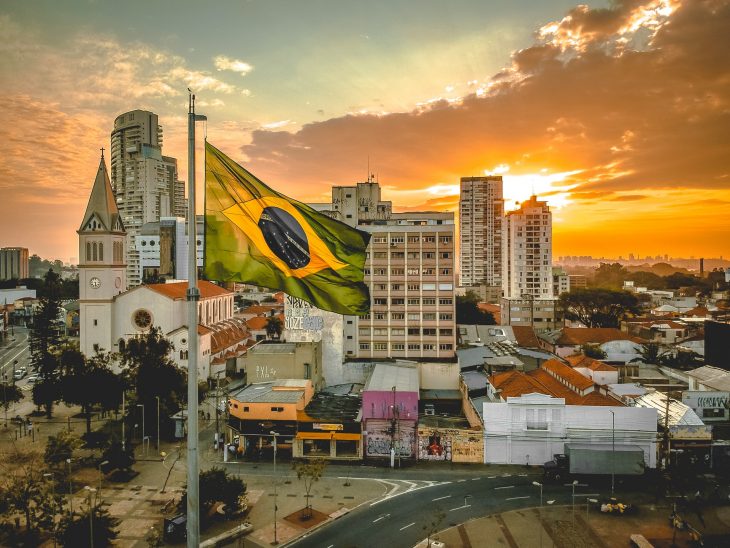
Spectacular beaches, widest savannahs, tall mountains, mouth-watering dishes, Brazil has all of these and more! It has a lot to offer, like fun festivals, beautiful rainforests, and altogether vibrant culture!
If you like to travel, the Rio Carnival, the world’s biggest carnival, should be on your destinations list. Around 2 million people flock to the streets of Rio de Janeiro each year. They do so in the days leading up to Lent. They dance in the streets, enjoy music, wear elaborate costumes, and marvel at the parades.
And if you are a foodie, we bet you can’t wait to go to Brazil to eat at the “churrascarias.” These are restaurants where waiters parade barbeque skewers. In these restaurants, waiters circulate around the tables, showing off the succulent meat to the hungry diners. Customers choose their favorite form of beef, the beef is cut off the skewers and served on the dining plates. It all began in the early 1800s. A group of Gauchos (European immigrants who settled in Brazil), got together and built a fire, then skewered large portions of meat and slowly grilled it.
Finally, if you are a sports buff, we’re sure you have a favorite Brazilian soccer player. Brazilians are passionate about soccer, which they call football, and their country has produced some of the world’s most popular players! Brazil has won the FIFA World Cup five times, the most of any nation.
How’s that for a cool and quick rundown of Brazil facts? If you liked what we just did, come join us as we discover more of Brazil. Explore the beauty of this country by going through our cool and fun collection of Brazil facts!
- Brazil is the 5th largest country in the world by area.
- Brazil can also be considered the 6th most populous country in the world.
- Independence Day is on September 7.
- With 220 million people in Brazil, 91% of them can read and write.
- Brazil has 10 bordering countries: Argentina, Bolivia, Colombia, French Guiana, Guyana, Paraguay, Peru, Suriname, Uruguay, Venezuela.
- The Federative Republic of Brazil is the country’s official name.
- Brazil is the biggest country in both Latin America and South America.
- There are many different races and ethnic groups in Brazil.
- Portuguese is the national language of Brazil.
- The religion is mainly Christian, Roman Catholic, and Protestant.
- Brazil’s National Anthem is “Hino Nacional Brasileiro.”
- Sao Paulo is the biggest city in Brazil.
- The national colors of Brazil are yellow, green, and blue.
- Brazil is one of the Latin American countries.
- The country is located in South America.
- In 1822, Brazil proclaimed independence from Portugal.
- Brazil was governed by numerous Brazilian emperors until 1889.
- The Amazon River is one of Brazil’s biggest rivers.
- Brazil’s famous landmark is the Christ the Redeemer statue.
- Brazil is located near the equator.
Pico de Neblina is the highest mountain in Brazil.
The mountain is in Serra da Neblina, a portion of Serra do Imeri, a section of the Guiana Highlands on the Brazil-Venezuela border. It has a height of 2,995,3 meters (9,827 feet) above sea level.
According to a 1962 exploration of border research, its top is positioned within Brazilian boundaries, at just 687 meters (2,254 feet) horizontal distance from Pico 31 de Março, Venezuela’s border.
There are more than 210 million people living in Brazil.
There have been significant levels of ethnic and race convergence, cultural integration, and amalgamation of different schools of thought in Brazil. Since 1872, Brazil has conducted an annual census of the population. Scanned type versions of the census have been released since 1960.
Semi-nomadic tribes inhabited Brazil before the colonization.
This was before the arrival of European settlers in the 16th century. Out of all the European settlers, the first to arrive were the Portuguese. Under the direction of Pedro lvares Cabral, they protected the region against further foreign invasions until colonial rule ended in the early 18th century.
Beginning with the boom of the sugarcane industry in the 16th century, which formed the base of the Brazilian economy, Brazil has gradually established itself as a valuable strategic and economic stronghold. African slaves were introduced to the land as vast plantations grew in size, leading to the African rich presence in contemporary Brazilian culture.
Before 1889, which was when Brazil has officially proclaimed a republic, numerous Brazilian Emperors controlled it. Since January 2019, the president of Brazil has been Jair Bolsonaro.
Brasilia is Brazil's capital.
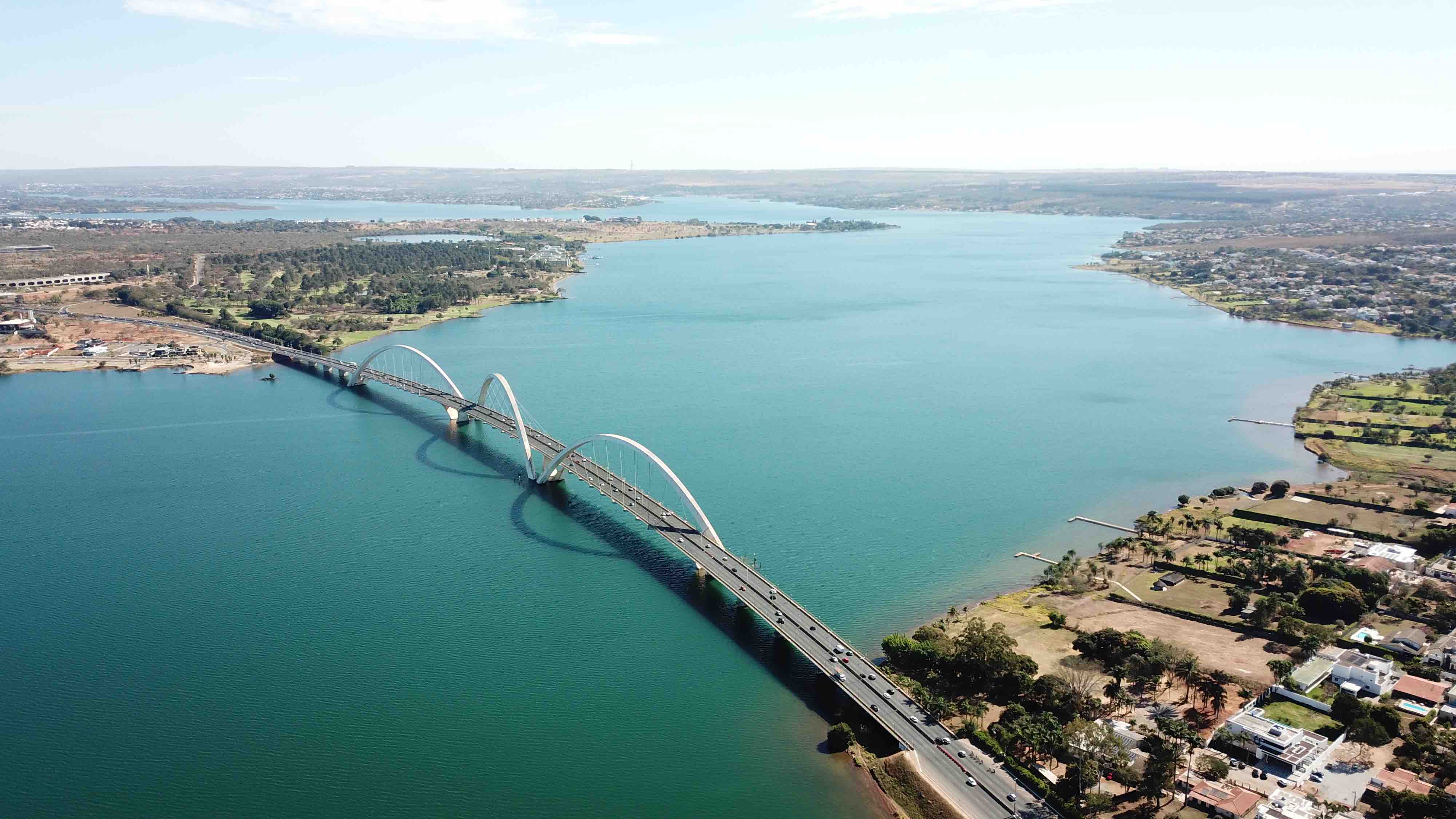
For years, Rio de Janeiro had been its capital. There were long-distance government offices and traffic jams. The government then agreed to establish a new city that would directly become the capital. On April 21, 1960, Brasilia was born four years after the work of engineers, architects, and urban designers.
Brazilian is the name for the citizens in Brazil.
A Brazilian may also be born overseas to a Brazilian parent or even a legal guardian and an individual who obtained Brazilian nationality. For example, Brazil is a multiethnic nation, which indicates that it is home to a population of multiple ethnic backgrounds. Americans consider Brazilians as “Latins,” or “Latinos,” and “Latinas.
Brazil is the biggest country in South America.
Brazil’s geography is enormous and diverse, filled with rivers, various humidity levels, mountainous peaks, and plateaus. Brazil is primarily a tropical country known for its vast Amazon lowlands; however, highlands cover the majority of the country.
Brazil is divided into five primary geographic areas: the Central-West Pantanal, lower Amazon areas, Guiana Highlands, the coastal lowlands, and the Brazilian highlands.
Brazil is a "Barbeque King".
Argentina and Brazil appear to have the most number of barbeque lovers in South America. And although each country treats meat differently, certain aspects remain the same, including the ogre-sized meat, which is most enjoyed at a quiet pace and with an elasticated waistband, from varieties to side dishes.
Brazil has moqueca, the famous seafood dish.

Moqueca is a fish stew served with clouds of fragrant steam rising from the boiling hot clay pot as it is uncovered at the table. Both Baianos (from Bahia, in the Northeast Region of Brazil), and Capixabas (from the neighboring state of Esprito Santo), claim to be the inventors of the dish, and both serve up equally delicious variants.
Chocolate lover? Brigadeiros are for you!
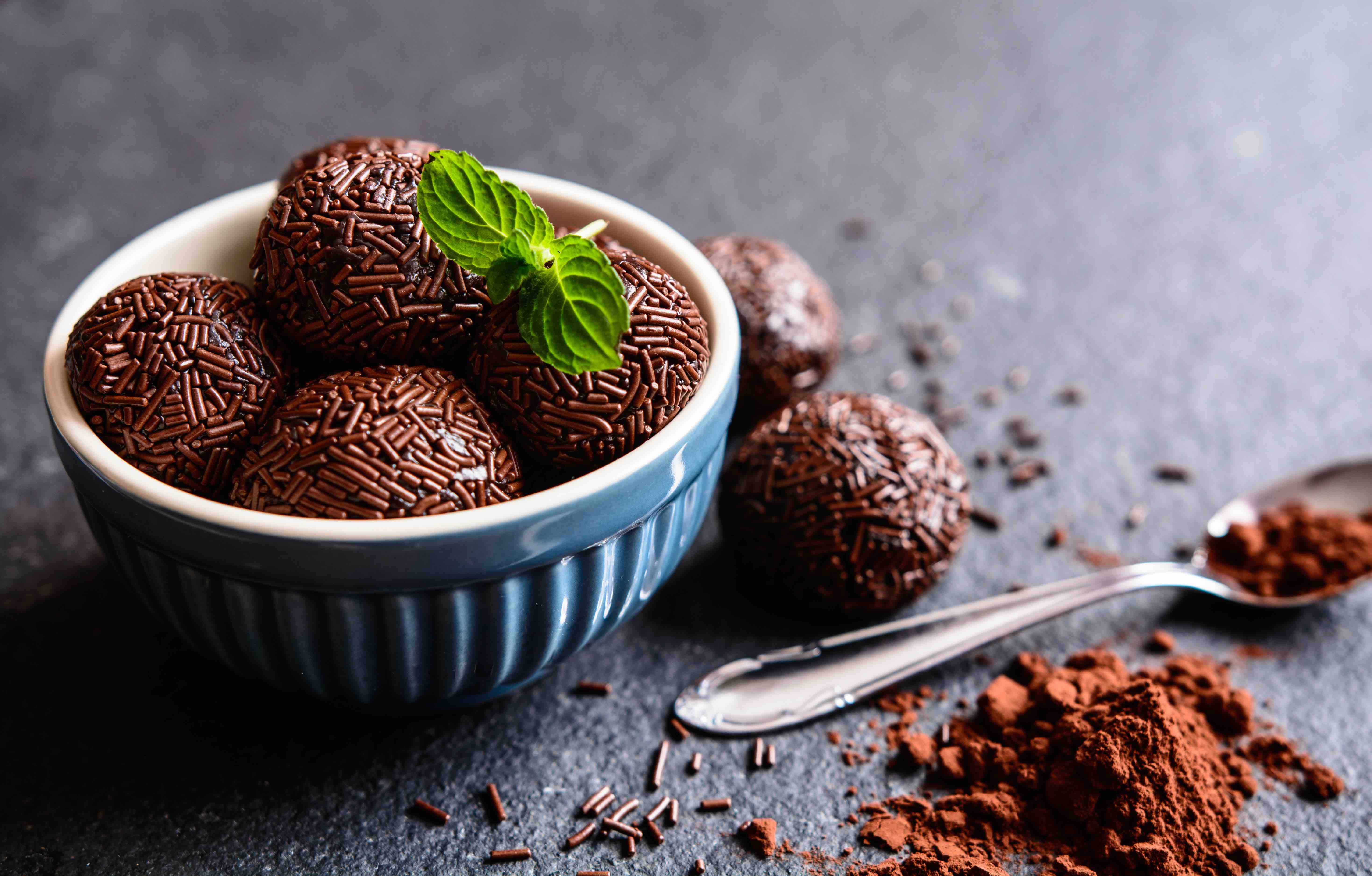
The response to this delicious traditional Brazilian dessert is so clear that Brigadeiros are practically a staple at children’s parties all around the world. It is made of cocoa powder and condensed milk, these ingredients are combined with butter, and formed into balls before mixing with chocolate sprinkles. They are assured to offer an instantaneous sugar rush.
Brazil is the largest coffee producer in the world.
Brazil produces about a third of all the coffee in the whole world, and the production of coffee plays a big part in the country’s economy. Since 1840, Brazil has become the largest producer of coffee, after French immigrants brought the first plant of coffee to Brazil in the 18th century. Around 300,00 coffee plantations are all over the land of Brazil. In just 2019, Brazil produced more than 44 million bags of coffee.
Brazil has a great reputation in FIFA World Cup.
Brazil won five times in the FIFA World Cup, namely in 1958, 1962, 1970, 1994, and 2002. They’re currently the country with the most number of champions in the World Cup.
Pele is one of the greatest football players in Brazil.
Edson Arantes do Nascimento, also known as Pele, is a Brazillian football player who played forward. FIFA called him “the greatest.” He is one of the highest-paid athletes in the world. Some of the awards he received are World Player of the Century by the International Federation of Football History & Statistics (IFFHS), FIFA Player of the Century, and Athlete of the Year by the International Olympic Committee.
Portuguese explorer Gaspar de Lemos arrived in Rio de Janeiro in the early 1500s.
The first Portuguese explorer to land in Rio was Gaspar de Lemos in January, 1502. According to folklore, Lemos sailed across Guanabara when he got the city’s name and confused the bay with a significant riverside entrance.
Although there is little information about Gaspar de Lemos’s personal life, credits go to him for the discovery of the archipelago of Fernando de Noronha, the island of São Vicente, the Bay of All Saints, and the Bay of Guanabara.
The beaches of Fernando de Noronha are promoted for tourism.
The beaches of Fernando de Noronha are known for being great recreational diving spots. It has the most popular beaches in the world like Baía do Sancho, Pig Bay, Dolphins Bay, Sueste Bay, and Praia do Leão. Underwater visibility at these places can reach up to 50 meters.
The Iguaçu National Park owes its name to the Iguazu River.
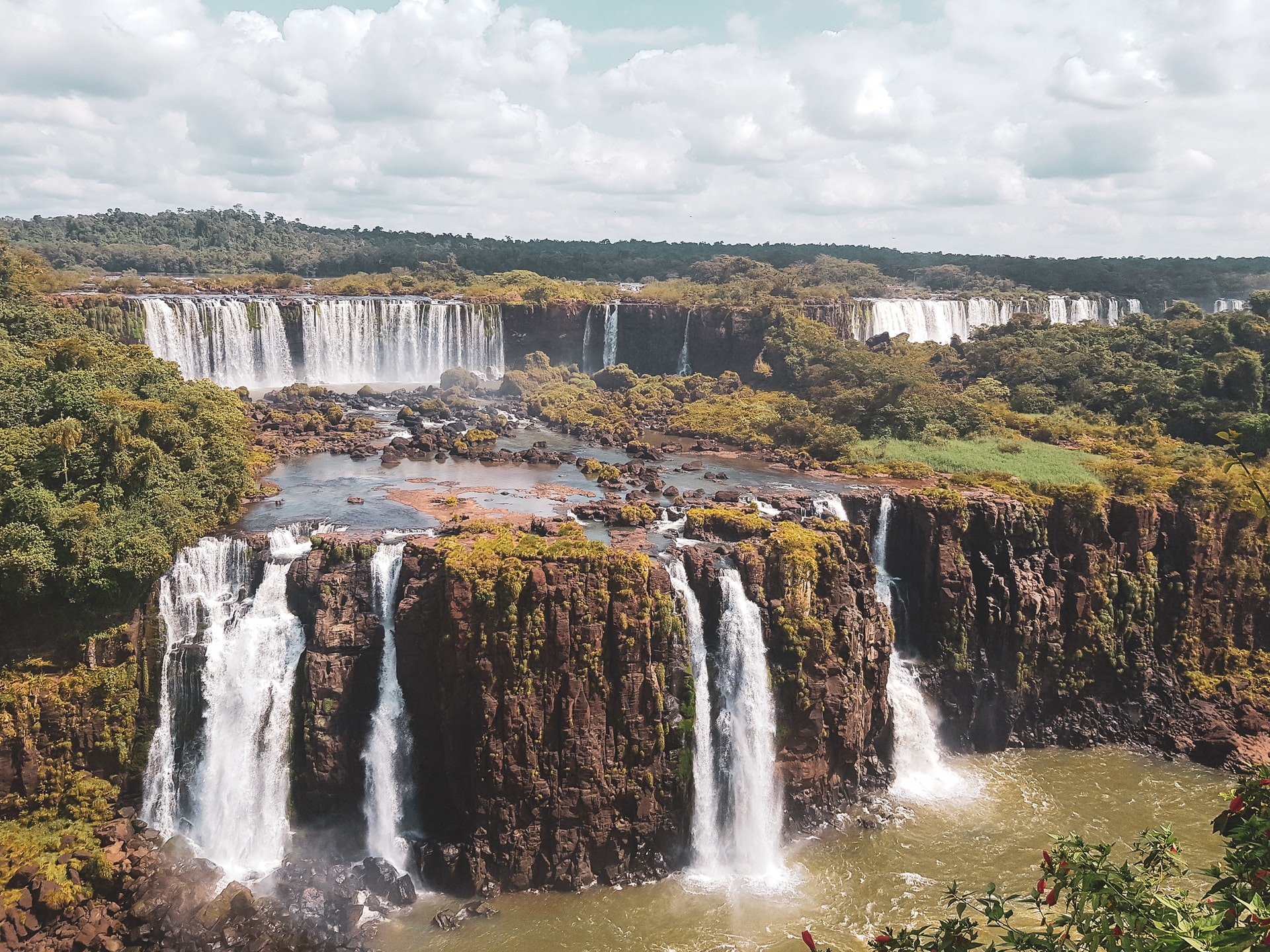
The Iguaçu National Park in Parana State, Brazil has a land area of 85,262.5 hectares with a length of around 420 kilometers. It is the most notable park in Prata Basin. The most beautiful spot in the park is the Iguacu falls.
The park is connected to Iguazu River, the largest waterfalls, and that is why Iguacu National Park owes its name to Iguazu River. Around 50 square km of the river makes the Iguacu Falls.
The Iguaçu National Park is also the home to 2,000 kinds of plants.
Brazil facts plant lovers will like! The national park is home to 2,000 kinds of plants, 400 species of birds, also 80 mammals, many butterflies, and other species. The most common mammal is the raccoon that lives both on land and on the trees. The Iguacu Falls is also the home of the spectacular bird called Toco toucan, a bird with a large beak.
Christ the Redeemer is in Tijuca Forest National Park.

Christ the Redeemer or Christo Redentor is an image of Christ in Rio de Janeiro, Brazil. Paul Landowski created the figure, while Heitor de Silva Costa built it together with Albert Caqout and Gheorghe Leonida. They finished building the statue in 1931.
Christ the Redeemer is 98 feet tall and weighs 635 metric tons. The arms are about 28 meters wide. The statue is situated at the summit of Corcovado Mountain. A lot of improvements have been done to make it a tourist spot, like adding escalators and elevators. Tourists climb 200 steps to reach the top. The statue symbolizes Christianity.
Brazil nuts come from one of the largest trees in the Amazon rainforest.
Brazil nuts are called castañas de Brasil, nuez de Brasil, or castañas de Pando in Latin America. They come from a Brazil nut tree, a massive tree that can grow up to 50 meters (160 feet) tall, with a trunk diameter of 1 to 2 meters (3 feet 3 inches to 6 feet and 7 inches), making it one of the largest trees in the Amazon rainforest. It can live for 500 years or more, and it is not unusual for it to live to be a thousand years old. The fruit is abundant on Brazil nut trees.
Manuel Deodoro da Fonseca is the first president of Brazil.
Manuel Deodoro da Fonseca was born on August 5, 1827, in Vila Madalena, Alagoas. He was a Brazilian lawmaker and military administrator who served as the first President of Brazil.
Manuel Deodoro became the president after he led a military coup that overthrew Emperor Pedro II. He declared the Republic in 1889. However, he resigned after two years because of political pressure.
The story behind the Brazilian flag's design

The Brazilian flag is bright green, with a yellow diamond in the middle, filled with a blue globe. There are 27 stars in the blue globe, as well as a white flag with the country’s slogan: Ordem e Progresso (Order and Progress).
The stars are an important part of the flag’s symbolism. They represent constellations in the southern hemisphere as seen from Rio de Janeiro in the early morning hours of November 15, 1889, the day the nation transitioned from an empire to a republic. Raimundo Teixeira Mendes, Miguel Lemos, Manuel Pereira Reis, and Decio Villares created the overall design.
Carnaval do Brazil is a yearly Festival.
The Carnival of Brazil is a yearly Brazilian holiday. People in Brazil celebrate Carnaval before the beginning of Lent. Carnival is the most famous holiday in Brazil. It is a fun celebration with food and music. It is a six-day party where people sing and dance on the streets. The original costumes for the Carnaval came from Europe. Samba schools in Rio de Janeiro, Sao Paulo, and Vitoria arrange large parades.
Samba is the official music of the Brazilian Carnival.
Samba originated in Rio de Janeiro and is the most famous genre of music in Brazil. It is accompanied by drums to produce a warm feeling and a happy mood. Ismael Silva, together with other musicians, founded Estacio de Sa, the first samba school.
Brazil's economy is still developing but one of the largest in the world.
The economy of Brazil is the 12th largest in the world in terms of Gross Domestic Product (GDP). Brazil is one of the main producers of sugarcane, coffee, orange, guarana, acai, and Brazil nut.
In 2018, Brazil became the 48th most visited country with around 6.6 million tourists. The other sectors of Brazil’s economy are manufacturing and agriculture.
Joseph Safra is the richest man in Brazil.
Joseph Safra is a Lebanese Brazilian banker and billionaire businessman. He ran the Brazilian banking and investment empire, Safra Group. He was the Chairman of the Safra National Bank of New York and Banco Safra in Sao Paolo, Brazil. Forbes Magazine reported that Safra’s net worth is around US$22.8 billion dollars. He is considered to be the 52nd richest person in the world, and the richest man in Brazil.
The name Brazil comes from the brazilwood tree.
The word Brazil comes from the brazilwood tree, a tree that once grew plentifully along the Brazilian coast. In those days, Brazilwood was highly regarded by the European textile industry because it contains a deep red dye, and it was the first commercially exploited product from Brazil.
Throughout the 16th century, indigenous people along the Brazilian coast gathered vast quantities of brazilwood, which they traded to European traders (mostly Portuguese, but also French) in exchange for various goods.
“In Portuguese, brazilwood is called “pau brasil,”with the word “brasil,” meaning “red like an ember,” and “pau,” meaning wood.
In the 16th century, Fernão de Loronha a prominent 16th-century Portuguese merchant of Lisbon, of Jewish descent helped a group of sellers produce wood dyes for the European textile business.
The North Region is the largest region of Brazil.
The North Region is the largest district in Brazil. Its land area is equivalent to 45.27% of the total land area of Brazil. But it has the least population, with 3.8 inhabitants per square kilometer. Native Brazilians are the first inhabitants of the North Region, with different tribes and villages.
There are just a few highways in this region. The Trans-Amazonian Highway is one of the most important. They use boats and airplanes as forms of transportation. Amazon River and the jungles that surround it are also a big part of Northern Brazil.
Central West Region is the heart of Brazil.
It has two of the best attractions in Brazil, Brasilia, the modern city, and Pantanal, the wetland area. The region has a very small population that is why most of the grassland is for the pasture of animals. The region offers activities like cave exploration, waterfall rappelling, or trekking.
The Southeast Region is Brazil's powerhouse.
The Southeast region contributes 49% of the Brazilian GDP or Gross Domestic Project. The land area of the Southeast region is just 1/10th of Brazil’s territory, but the population is around 2/5th. The region includes the states of Sao Paulo, Minas Gerais, Espirito Santo, and Rio de Janeiro. The main tourist attraction in this area is Rio de Janeiro.
The South Region is the only region that has a mild climate.
The south region is the only region that has hot and humid summers and cold to mild winters. This is also the smallest region in Brazil, the land area is just 6.76% of the entire country. The most famous tourist spot in this region is the Iguacu Falls.
The Northeast Region plays an important role in the history of Brazil.
Portuguese and other European people are the ones who discovered and colonized the Northeast Region. They played an important role in the history of Brazil. The region is famous for its rich language and culture including the dishes, music, and literature. Brazil has 26 states, and nine of these are in the northeast region.
Real is the currency of Brazil.

Since 1994, the Brazilian real is the official currency of Brazil. 1 real is equivalent to 100 centavos. Coins denominations range from 1 centavo to 1 real, while banknotes or paper money value is from 1 to 100 reais. Paper money has a picture of the republic, and an image of Pedro Álvares Cabral, the first European to explore Brazil.
Jaguar is the national animal of Brazil.
The national animal of Brazil is the jaguar. The jaguar is a strong feline with big jaws and paws. It lives in the forest, swamps, and grassland of the Amazon.
Brazil's national drink is Caipirinhas.

Caipirinhas is the national cocktail in Brazil, it is made mainly of fermented sugarcane, sugar, and lime. Fruit, juice, and liquor are mixed together. It came around 1918, the original recipe includes lemon, garlic, and honey and was used by people to cure the Spanish flu.
Pedro Álvares Cabral discovered Brazil.
In 1500, Pedro Alvares Cabral, a European Portuguese explorer, discovered Brazil. He led a fleet of ships, and on his way to India, he landed on Porto Seguro, between Salvador and Rio de Janeiro. His journey led to the discovery of Brazil.
Amazon Forest in Brazil has thousands of different species of flora and fauna.
Around 45,000 different species live in the vast rivers and dense trees of the Amazon rainforest. It is home to amazing and dangerous animals like poisonous snakes, piranhas, electric eels, dart frogs, and of course, the jaguars.
Brazil is also home to the Japanese.
In 1908, the first Japanese arrived in Brazil. About half of the Japanese settlers came from Southern Okinawa. In addition, the Japanese became owners of coffee plantations. Now, Brazil is home to around 1.5 million Japanese.
Brazil has 'favelas' or a kind of informal settlement.
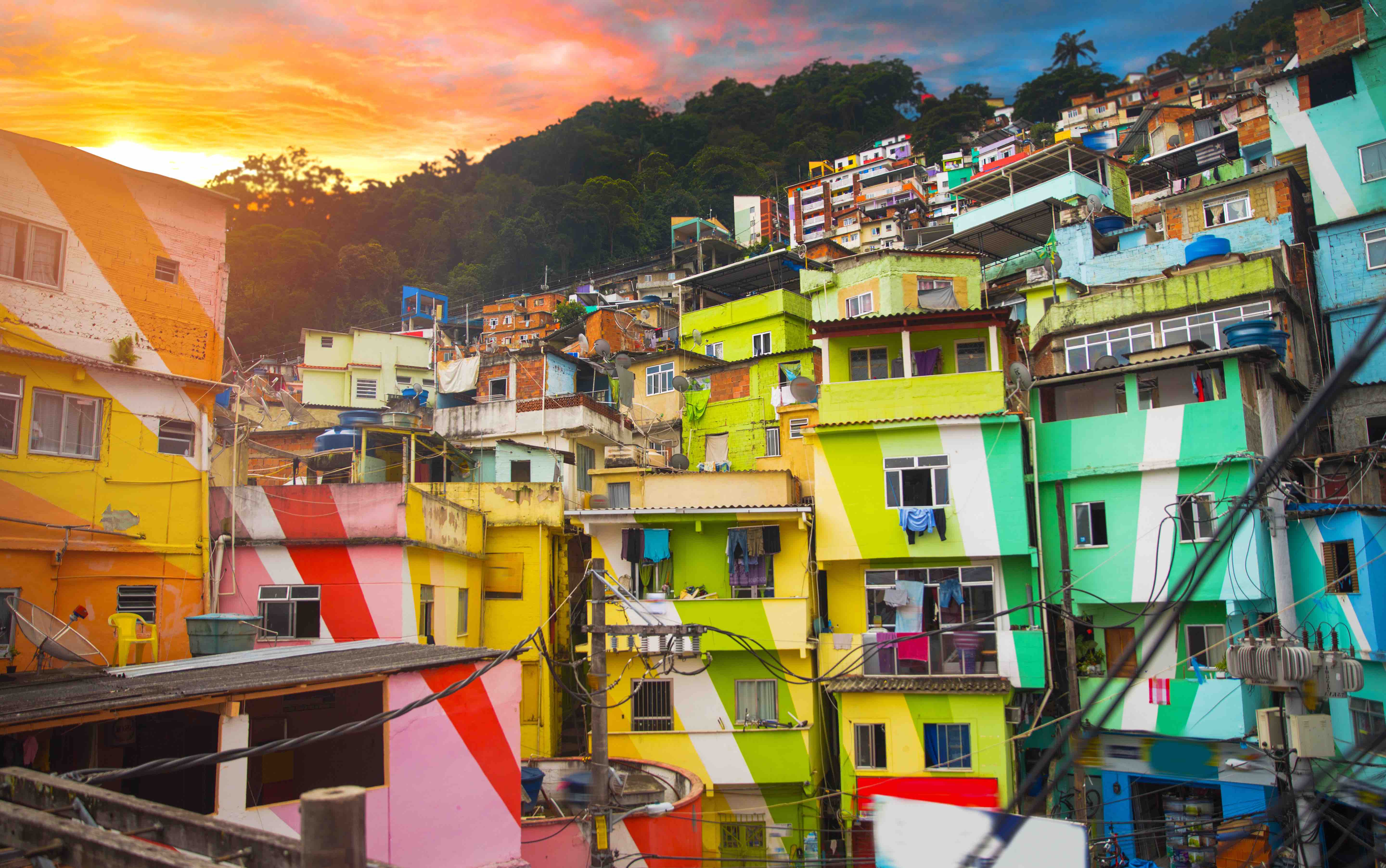
Favela is a type of low-income informal settlement. The first favela (Providencia) in Rio de Janeiro appeared in the 19th century. Soldiers built them because they have no place to live during the Canudos War. Canudos War is a conflict between the First Brazilian Republic and the residents of Canudos in the northeastern state of Bahia. In 2010, about 6% of Brazilian lived in favelas and other slum locations.
Reading lessens a prisoner's punishment in Brazil.
In Brazil, prisoners can read up to 12 books to lessen their days of punishment by up to 48 days per year. They just have to read and compose a report about the book. The Brazilian Parliament initiative “Redemption Through Reading” helps a prisoner trim the length of a sentence.
Donkey Boneco is the first beekeeper in Brazil.
Donkey Boneco is a Brazilian donkey and the first-ever used beekeeper in Brazil. The donkey wears a protective suit, so the bees will not be able to sting it. Manuel Juraci, a 59-year honey collector, designed a protective suit for his donkey.
The Gold Frog of Brazil is one of the smallest frogs in the world.
The Brazilian Gold Frog measures 8.6–10.2 millimeters, and it has a bright yellow-orange color. This frog is one of the smallest frogs in the world. Moreover, it is endemic to southeastern Brazil and common in the state of Rio de Janeiro.
The Brazilian Gold Frog is a species of frogs that belong to the group Brachycephalidae, a family of frogs native to eastern and southern Brazil and northern Argentina.
Tikuna is the most numerous tribe in Brazil.
The Brazilian tribe Tikuna is most numerous in the Brazilian Amazon. The population of the Tikuna group is around 36,000. Originally, these indigenous or native tribes live far from the rivers. They are very artistic, they usually make crafts, baskets, and statues.
George Gardner discovered a glow in the dark fungus in Brazil.
In 1839, Scottish biologist George Gardner discovered a glowing fungus in Brazil. When he saw some children are playing with a glowing object, he realized that what he found is a mushroom. He called the glowing mushroom Neonothopanus gardneri. This fungus grows at the base of palm trees.
Brazilian tradition says that jumping over seven waves on New Year's Eve brings good luck.
A tradition in Brazil says that jumping and throwing flowers over seven waves during New Year’s Eve bring good luck and peace. They believe that goddess of the sea will fulfill their wishes.
Bahia Emerald, the biggest emerald ever found, is from Brazil.
Bahia emerald was originally mined in 2001 in Bahia, Brazil. It is the biggest emerald ever seen. It weighs just about 752 lb (341 kg). Although its estimated cost is around $400 million, the real or exact value is not yet known.
Apple products are very expensive in Brazil.

The government charges high taxes to electronics or gadgets that are not made in their country. Consequently, buying an Apple or iPhone product in Brazil will cost you thrice the price if you will in the United States.
Sex change is one of the human rights in Brazil.
In Brazil, sex change is legal. Initially, Brazil’s public health system started to provide free sex-change operations in 2008, in pursuit of a court order. Patients who wish to undergo sex-change must be at least 18 years of age. Along with this, Brazil’s Ministry of Health reports that the average number of surgeries per year is 100.
As of today, the Brazilian Federal Council of Medicine sets new guidelines, patients must now be 21 years old instead of 18, and they must take account for all their needs.
There are more than 2,700 airports in Brazil.
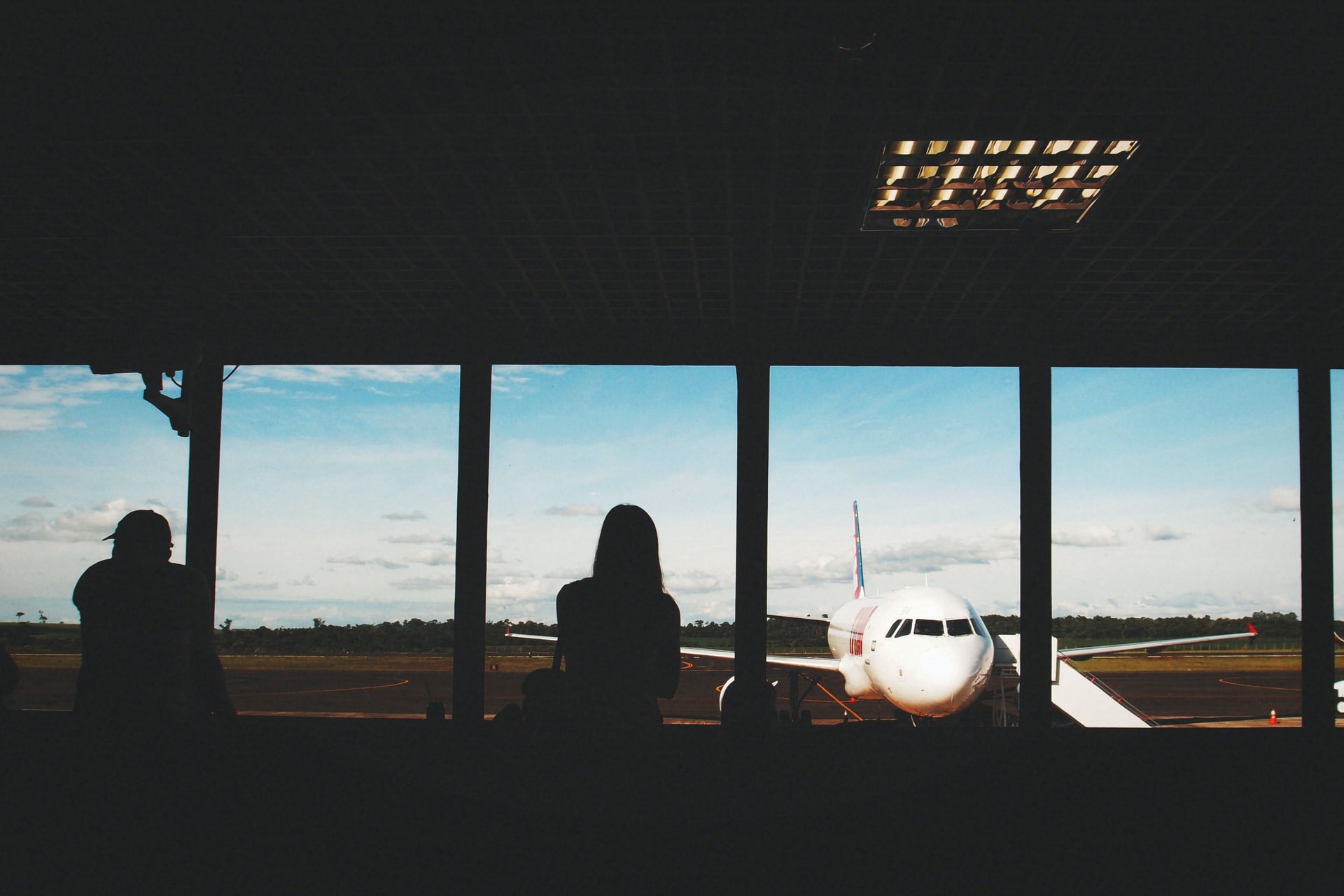
According to the National Civil Aviation Agency of Brazil, there are 2,717 airfields in Brazil. Specifically, there are 534 public airports and 2,183 private and small airports as of this time.
Brazil has 3 time zones.
There are three current Brazilian time zones. First, UTC -02:00, islands located in the northeast of Brazil use this time zone. Second, UTC- 03:00, this time zone is the real Brazilian time. Finally, UTC-04:00, five states in the west use this as their official time zone.
Cashew of Pirangi is one of the world's biggest cashew trees.
Cashew of Pirangi located in Pirangi do Norte, is the biggest cashew tree in the world, and it an be found in Brazil! It covers around 73,000 square meters. Moreover, this entered the Guinness Book of Records in 1994 and it has a size of 70 normal sizes of cashew trees. Pirangi has been planted in 1888.
The most known last name in Brazil is Silva.
In Brazil and Portugal, the most common surname is Silva. Da Silva is a variation for Silva. About 20,882,120 Brazilian and Portuguese have this last name. The Latin term ‘silva’ means jungle or forest. The name is given to people or families who are not sure which city they came from.
Was this page helpful?
Our commitment to delivering trustworthy and engaging content is at the heart of what we do. Each fact on our site is contributed by real users like you, bringing a wealth of diverse insights and information. To ensure the highest standards of accuracy and reliability, our dedicated editors meticulously review each submission. This process guarantees that the facts we share are not only fascinating but also credible. Trust in our commitment to quality and authenticity as you explore and learn with us.
